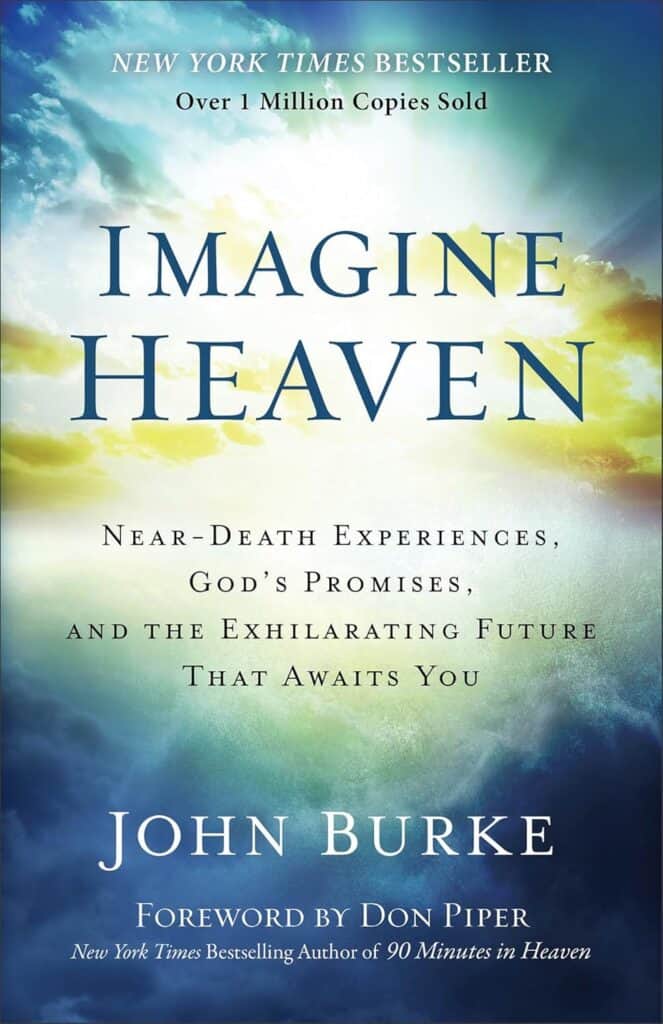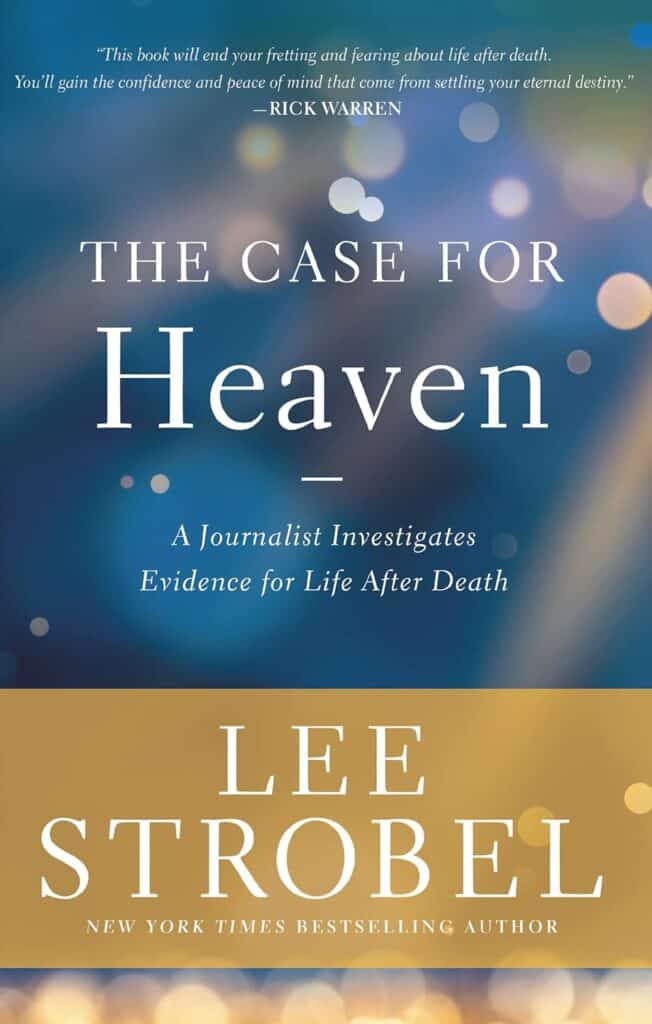Introduction
Some topics are just hard to ignore—near death experiences being one of them. They have a way of catching our attention, whether through a book, a documentary, or a conversation with someone who’s been “there and back again.” These stories often involve people clinically dying—sometimes for minutes, even hours—and then returning with vivid, emotional accounts of something far beyond this life. Light. Peace. A tunnel. A voice. Sometimes, Jesus Himself. Sometimes… something terrifying.
For years, many of us in the church world have been understandably cautious about these reports. Are they real? Are they biblical? Or are they just the final misfirings of a brain shutting down—our neurons giving us one last dream before the lights go out?
That’s the tension this post explores.
We’re going to refer to these experiences by their common shorthand—NDEs, or near death experiences. They’ve been reported across cultures, faiths, ages, and professions, from CEOs and surgeons to children and skeptics. And while they vary in detail, many share striking similarities that are hard to dismiss—especially when they echo, intentionally or not, the truths of Scripture.
So, are NDEs genuine spiritual glimpses into the life to come—or just tricks from a dying brain?
Let’s take a closer look at the phenomenon, the testimonies, the theology, and the science. We’ll explore what people are experiencing, how it might align with biblical revelation, and how we—as believers—can think about these things with both open minds and anchored hearts.
What Are Near Death Experiences?
Near death experiences, or NDEs, are deeply personal events reported by individuals who were pronounced clinically dead or came very close to death but were later revived. These moments often leave a lasting impact, as the experiencers describe something beyond the natural—something that feels more real than life itself.
Though no two NDEs are exactly the same, many share common elements: leaving one’s body, passing through a tunnel or corridor of light, encountering a powerful being of light (often identified as God or Jesus), reviewing one’s life in vivid detail, and experiencing overwhelming peace, love, or joy. Others describe reunions with deceased loved ones or being given a choice—or command—to return to life.
Interestingly, not all NDEs are pleasant. Some include darkness, confusion, or even terrifying visions that align more closely with biblical descriptions of separation from God. But regardless of the emotional tone, nearly all experiencers come back deeply changed.
Statistically, these accounts are more widespread than we might assume. A Gallup poll found that about 1 in 25 Americans claims to have had an NDE. In a broader international study covering 35 countries, the European Academy of Neurology reported the number as high as 1 in 10.
One particularly compelling case involves Vicki, a woman born blind who described vivid visual details during her NDE—details that were later verified by caregivers. For someone who had never seen light or shape, her experience adds an extra layer of credibility to the possibility that these are not just brain-based illusions.
So, what are NDEs? In simple terms, they are stories from the edge of life—encounters that raise profound questions about death, eternity, and what lies beyond.
When the Evidence Gets Physical: Verified Details from NDEs
1. The Case of Maria and the Tennis Shoe:
In the 1970s, a woman named Maria was admitted to Harborview Medical Center in Seattle following a severe heart attack. During her hospitalization, she reported an out-of-body experience where she observed a tennis shoe on a ledge of the hospital’s third floor. Maria described the shoe in detail, noting that it was a blue sneaker with a worn area over the little toe and a lace tucked under the heel. Intrigued by her account, hospital social worker Kimberly Clark Sharp searched for and eventually located the shoe exactly as Maria had described, in a place that was not visible from Maria’s hospital room or from the ground. Maria’s Experience.

2. The Case of the Red Sticker on the Ceiling Fan:
Another compelling account involves a patient who, during an NDE, reported floating near the ceiling of an emergency room and observing a red sticker on the top side of a ceiling fan blade. The patient described the sticker’s appearance and location in detail. Skeptical but curious, a nurse retrieved a ladder to inspect the fan and discovered the red sticker exactly where the patient had indicated, despite it being in a position not visible from the ground.
These cases are frequently discussed in NDE literature as they present intriguing instances where individuals report perceiving verifiable details during periods when they were clinically unresponsive. While such accounts are compelling, interpretations vary, and they continue to be subjects of interest and debate among researchers and scholars.
For a more in-depth exploration of Maria’s experience, you might find the following video informative: The Red Sticker
As these kinds of cases continue to surface and undergo scrutiny, some Christian apologists have begun to thoughtfully include NDEs in their presentations—not as primary evidence like archaeology or fulfilled prophecy, but as supplementary support for the reality of life after death. Given the sheer number of documented experiences and the consistency of key details across cultures, it’s become harder to simply dismiss them outright. While we must keep our theology rooted in Scripture, these testimonies offer another layer of insight—perhaps one more way God is stirring hearts and confirming His truth to a skeptical world.
Testimonies That Make Us Wonder
One of the most compelling aspects of near death experiences is how often they echo imagery found in Scripture. Whether it’s the overwhelming light, encounters with a man radiating love and authority, or a sense of timeless peace, these recurring elements are hard to chalk up to coincidence.
In his research for Imagine Heaven, pastor and former skeptic John Burke studied over a thousand NDE accounts from people across cultures, ages, and belief systems. What he found was striking: many described a radiant being of light—consistently recognized by Christians as Jesus—who exuded such love that words failed them. Others reported seeing landscapes too beautiful for description, loved ones who had passed on, and even moments from their lives replayed in front of them with astonishing clarity.

One of the most moving themes found in these testimonies is the life review—a moment when individuals say they relive events from their life, not only seeing their actions but feeling the emotional impact of those actions on others. It’s a powerful experience of personal reckoning, often filled not with condemnation but clarity. Many say they didn’t feel judged by God during this review, but rather saw themselves more honestly than ever before.
As one experiencer put it, “God wasn’t condemning me—I was condemning myself.” That statement sounds an awful lot like what Scripture teaches: “There is now no condemnation for those who are in Christ Jesus” (Romans 8:1). Jesus Himself said, “For there is nothing hidden that will not be disclosed, and nothing concealed that will not be brought out into the open” (Mark 4:22). The light of heaven doesn’t hide the truth—it lovingly reveals it.
One powerful example comes from a woman named Crystal, who in her NDE met Jesus and was shown scenes from her life. She said the presence of Jesus was overwhelming—not in fear, but in pure love. She described weeping in His presence—not because He shamed her, but because she was finally able to see how much He had loved her through all of it.
These testimonies don’t replace Scripture, but they do reflect it in surprising and sometimes beautiful ways. And maybe, just maybe, they are glimpses of what awaits those who trust in the One who is the Light of the world.
Can We Trust These Experiences?
With so many compelling stories, it’s easy to get swept up in the wonder of near death experiences. But as believers, we have to ask: can we trust them? Or perhaps better said—how should we trust them?
Scripture gives us a clear standard: God’s Word is our authority. Not emotion. Not experience. Not even powerful stories told with sincerity. As amazing as some NDE testimonies are, they must always be viewed through the lens of biblical truth.
Paul warns us in 2 Corinthians 11:14 that “Satan himself masquerades as an angel of light.” That’s not a verse to ignore when dealing with spiritual experiences. Just because someone sees light—or even feels peace—doesn’t automatically mean they’ve encountered the God of the Bible. Some “heavenly” encounters may in fact be deceptive.
That’s why theological filters matter so much. NDEs are real experiences in the sense that they genuinely happen to people—but how we interpret them makes all the difference. Even those who saw Jesus in the first century had vastly different reactions. Some followed Him. Others plotted to kill Him.
Our faith isn’t built on visions or subjective experiences—it’s built on the resurrection of Jesus Christ, on the promises of God’s Word, and on the witness of the Holy Spirit. Experiences can inspire curiosity or even encourage belief, but they should never replace or override Scripture. Hebrews 4:12 reminds us that “the Word of God is living and active,” able to discern the thoughts and intentions of the heart. No NDE, no matter how profound, can do that like God’s Word.
So while NDEs may serve as intriguing signs pointing toward spiritual reality, we must remember—they are not the foundation of our hope. Jesus is.
Biblical Echoes in Modern Accounts
While we must be cautious not to base doctrine on experience, it’s worth noting that many near death experiences (NDEs) echo descriptions found in Scripture. These similarities don’t prove anything definitively, but they do invite reflection—and for many, they affirm truths already revealed in God’s Word.
One of the most frequently reported elements in NDEs is the overwhelming presence of light. People describe it as pure, brilliant, and filled with love. It’s often associated with a person—Jesus Himself—who radiates this light. This aligns beautifully with 1 John 1:5: “God is light; in Him there is no darkness at all.” Those who encounter this light say it exposes everything, yet they don’t feel shamed—only loved.
The transparency people describe—where nothing is hidden or glossed over—reflects Jesus’ words in Mark 4:22: “For whatever is hidden is meant to be disclosed, and whatever is concealed is meant to be brought out into the open.”
Interestingly, some report not just a sense of reckoning, but also the revelation of God’s desire to reward faithfulness. One account recalled the person being shown small acts of kindness that had ripple effects far beyond what they realized. This ties in with 1 Corinthians 4:5, where Paul says that God “will bring to light what is hidden in darkness and will expose the motives of the heart. At that time each will receive their praise from God.”
And then, there’s the joy. So many return overwhelmed by the joy they experienced in God’s presence—a joy unlike anything on earth. This reminds us of Jesus’ promise in John 15:11: “I have told you this so that my joy may be in you and that your joy may be complete.”
While we must avoid building doctrine from experience, these echoes can serve as gentle affirmations that what Scripture has long said about heaven, judgment, and God’s love is not only true—but deeply personal.
What Science Has to Say
When it comes to near death experiences, science has its own set of explanations—and we should listen. After all, we are not only spiritual beings but also physical ones, wonderfully made by a God who gave us minds capable of discovery.
Neurologists and psychologists have offered several theories to explain NDEs, including chemical changes in the brain, oxygen deprivation, and end-of-life brain activity. Some studies have shown bursts of electrical activity moments after clinical death, particularly in the parts of the brain associated with memory and perception. This has led some researchers to suggest that NDEs may be vivid hallucinations or protective mental responses as the brain shuts down.
These insights are worth considering. But it’s also important to realize that scientific explanation doesn’t automatically cancel out spiritual reality. Just because we can describe how something happens doesn’t mean we fully understand why it happens.
In fact, the ability of the human brain to produce such consistent, vivid, and often life-altering experiences in the face of death may itself point to something greater. Could it be that we are designed to recognize eternity? Ecclesiastes 3:11 says that God has “set eternity in the human heart.” Maybe what science observes is the echo of that eternity stirring awake as we approach the threshold.
The Bible teaches that we are not merely biological creatures—we are body, soul, and spirit (1 Thessalonians 5:23). Science can observe the physical. But it cannot fully grasp the soul, nor can it measure the Spirit of God.
So while medical and psychological research can offer helpful frameworks, it doesn’t need to undermine faith. In many cases, it may just confirm what Scripture has been telling us all along: that we are more than flesh and blood, and that death is not the end—but a doorway.
Why These Stories Matter—Even If We’re Skeptical
Even for those who remain skeptical, near death experiences can serve a powerful purpose: they awaken spiritual curiosity. They stir that quiet question inside us—what if there’s more?
That’s exactly what happened to former atheist and investigative journalist Lee Strobel. Known for his bestselling book The Case for Christ, Strobel turned his attention to the afterlife in The Case for Heaven after a personal health scare forced him to confront his own mortality. What he discovered was a growing body of evidence, including NDEs, that pointed toward something beyond this life.

Through interviews with experts and survivors, Strobel found that these stories often align with biblical themes—and more importantly, they often lead people to seek truth. For many, NDEs act as a kind of spiritual wake-up call. People who had never thought deeply about eternity suddenly find themselves questioning, searching, and in many cases, turning to Christ.
And that’s the point. These accounts aren’t the destination—they’re the doorway. They’re not meant to replace Scripture or salvation, but they may be the very thing God uses to nudge someone toward faith. As Burke writes, NDEs can be “modern-day parables”—not perfect, but powerful in pointing people toward a deeper reality.
Ultimately, the goal isn’t to believe in NDEs. The goal is to believe in Jesus—the One who holds the keys to life and death, and who offers eternal life to all who trust in Him.
Eternal Questions and the Invitation of Grace
One of the most striking aspects of near death experiences is the lasting impact they have on the people who go through them. Many return from these encounters profoundly changed—more humble, more loving, more forgiving. Priorities shift. Grudges fade. A deeper awareness of eternity takes root.
Interestingly, not all NDEs are filled with light and peace. About 23% report what could only be described as hellish experiences—dark, chaotic, terrifying. Yet even in these, grace is often found. In many of these testimonies, the individual cries out to Jesus in desperation, and He comes. He rescues. He restores. They return, not just physically revived, but spiritually reborn. Their lives become a living testimony to the mercy of God.
These stories, sobering as they are, remind us of a central truth: God’s grace is available now, before that final breath. Jesus, hanging on the cross, looked at a dying criminal and spoke the words every heart longs to hear: “Today you will be with me in Paradise” (Luke 23:43). That man had no time left for good deeds or religious rituals—only enough time to believe. And that was enough.
That same grace is extended to each of us today. You don’t have to have an NDE to come face-to-face with eternity. You only need to pause, reflect, and respond to the God who loves you.
These accounts—whether bright or bleak—invite us to ask eternal questions. Am I ready to meet God? Have I received the forgiveness Jesus offers? Do I know the One who holds my future?
If you’re reading this and sensing that nudge, don’t ignore it. That may be God calling you—not through an NDE, but through the gentle whisper of His Spirit, urging you to come home.
So, Are NDEs Real Glimpses of Heaven?
In the end, near death experiences aren’t airtight proof of the afterlife—but they are difficult to dismiss. With their striking consistency, biblical echoes, and life-changing impact, they invite us to consider the possibility that these are more than just biological phenomena. Perhaps, in His grace, God is giving some a glimpse of what lies beyond.
But even the most dramatic NDE can’t replace the authority of Scripture or the foundation of our faith. Our hope isn’t anchored in someone’s story—it’s anchored in a Savior. Jesus Christ lived, died, and rose again, offering eternal life to all who believe in Him.
If you’ve been stirred by what you’ve read—if these stories have awakened something in you—don’t wait for a brush with death to get right with God. He invites you to come now, by faith. The Bible says, “For God so loved the world that He gave His only Son…” (John 3:16) and “If you declare with your mouth, ‘Jesus is Lord,’ and believe in your heart…you will be saved” (Romans 10:9).
Want to take that next step? Start with a simple, honest prayer. God is listening—and He’s ready to welcome you home.





Leave a Reply